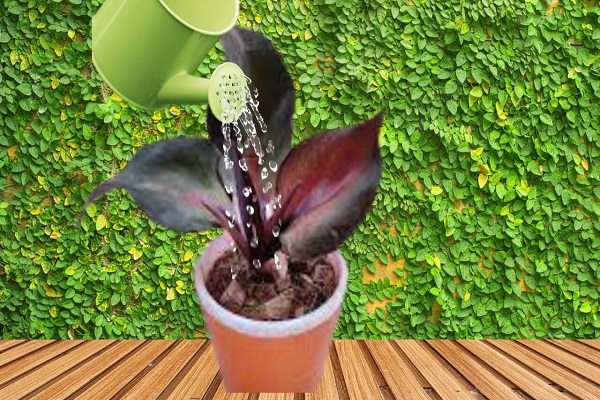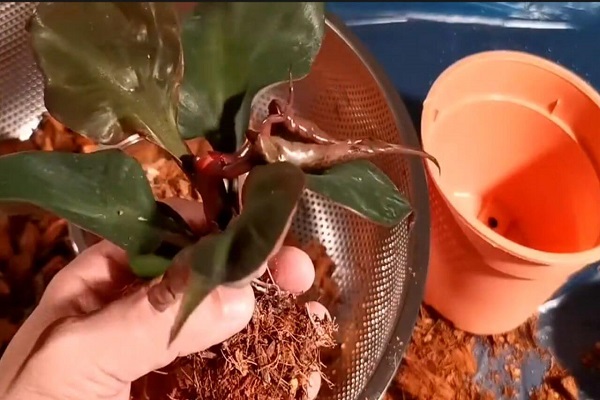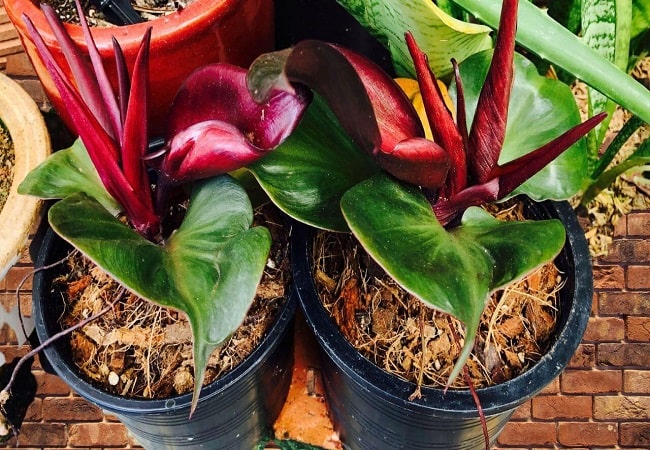Philodendron Red Heart is a popular houseplant known for its unique and striking appearance. This plant is a member of the Araceae family and is native to the rainforests of South America. As its name suggests, the Red Heart has heart-shaped leaves with a reddish-pink hue that gradually fade to a deep green as they mature.
The plant is relatively easy to care for and can thrive in a range of indoor environments, making it a favorite among both novice and experienced plant enthusiasts. With its attractive foliage and low maintenance requirements, the Philodendron Red Heart is an excellent choice for adding a touch of natural beauty to any living space.
Quick Navigation
The Red Heart Philodendron’s Origins and Early History
The philodendron red heart is a slow-growing plant in the Araceae family. It has wide, dark green leaves that fan out to show a bright red center. Since it is a mutant crossbreed, It made its strange open heart pattern and shape on purpose. The slow growth rate is because the plant was bred to use as a houseplant.
Most of us still don’t know who grew it, what it was, where it came from, or why. I only know that it was crossed with another species in South America and that people took many of the offspring to other tropical places like Thailand, Indonesia, and the Philippines.
The Essentials Things Of Extremely Rare Red Heart Philodendron Maintenance
The philodendron red heart is a mutant hybrid aroid that is rarely seen. Due to its high market value, it is in short supply. If you’re a fan of Red Heart, you should ensure your philodendrons are happy. Here are some guidelines for keeping your Red Heart philodendron healthy and happy.
Watering

The philodendron red heart, a cross between two tropical plants, always needs moist or damp soil to grow well. Therefore, avoid letting the soil get entirely dry in between waterings.
I learned from the internet that when the soil dries out completely, it gets hard and clumps around the roots. When you water your plant, it won’t get as much water or oxygen as it needs, which can cause root rot over time. Root rot can also happen when plants get too much water.
Most of the time, you should water this plant when the top inch of soil feels dry to the touch, but this isn’t always the case. Using a soil moisture meter isn’t either.
Instead of watering on a set schedule, like once a week, try to water based on what you see happening with your plant to ensure it does need it.
Fertilizer

I know that a plant needs fertilizer every time it’s watered. This isn’t always the case, and in fact, over-fertilizing can cause root rot.
I don’t fertilize my plant once a month like I used to; instead, I blend watering and fertilizing so that my plant receives a minuscule amount of high-quality fertilizer with each application of water I give it. This is a more natural approach to feeding plants; after all, in nature, they receive a constant trickle of nutrients for days, rather than ingesting them all at once in a single massive dose once a month.
If your plants look yellow or wilted, it’s time to start feeding them with DynaGro or liquid seaweed.
When giving plants food, be sure to dilute it before watering, so you’re not giving them too much at once. And remember to water out completely between waterings.
In the spring and summer, I water my plants with a solution of ¼ teaspoon of Dyna gro or 1 teaspoon of liquid seaweed diluted in 1 gallon of water (4.5 liters). I then fertilize them every time I water them with a dose of premium fertilizer. In autumn, I stop fertilizing; in winter, I stop watering altogether to prevent over-saturation.
Temperature

Red hearts can survive in a wide range of temperatures, but they like it best when it’s warmer. The best range for growth is between 71°F (22°C) and 86°F (30°C), but they can survive in temperatures as low as 59°F (15°C). If the temperature is less than 54°F (12°C), the plants will likely grow very slowly and die.
Soil

The philodendron “red heart” is a popular indoor plant that requires fertile, well-drained soil. Because this plant is often grown in containers, you should provide adequate drainage and moisture levels. A good potting mix will have plenty of organic matter and ample amounts of fertilizer to help promote healthy growth.
The soil requirement for red heart philodendron can vary depending on the location and climate. However, well-drained soil is usually recommended. Philodendrons require high phosphorus, potassium, and magnesium levels in their soil mix. A good starting point is a mixture of 40% coco coir, 20% orchid bark, 10% worm droppings, and 10% perlite. You can also add activated charcoal, which helps to improve the soil’s nutrient uptake.
Light

The red heart philodendron needs bright light to thrive and grow. If your home does not have bright light, you may need to supplement the plant’s natural light with artificial lighting.
You should maintain this plant between 400 and 600 FC for optimal growth. Around 200 FC is the bare minimum that this plant can tolerate. If the temperature drops any lower, the plant will begin to wilt and look extremely sad.
Humidity

Philodendrons are tropical plants that can tolerate a wide range of humidity levels. Most philodendrons will do well in an area between 50-70% humidity. If the humidity levels, get your philodendron may grow slower or flowerless. Make sure to keep an eye on the humidity levels in your philodendron’s environment and adjust as needed.
Repotting

Repotting your red heart philodendron should only be done every two years. If the plant’s roots get too big, it is better to keep them in a small pot rather than let them flounder in a large one. Some signs that your plant needs a new pot are as follows:
- The roots have grown through the drainage system’s cracks.
- The soil doesn’t drain as well as it used to.
- The plant’s roots are all around the bottom of the pot (root bound).
- The potting soil doesn’t drain as well as it used to.
- The plant is wilting or browning.
Issues That Often Affect Red-Heart Philodendrons
Red-heart philodendrons are often susceptible to several issues, some common to all plants. In contrast, others are specific to red-heart philodendrons. You can easily manage many of these issues. Still, if they become serious, orchardists may need to take action, such as pruning or removing the plant.
One main issue that often affects red-heart philodendrons is a fungus. This can occur in various ways, from mildew on the leaves to fungal root rot. Pruning infected leaves will help prevent the further spread of the fungus and can also reduce the size of the plant. If fungal root rot is severe, pruning and removal may be necessary for the plant to survive.
Another common issue affecting red-heart philodendrons is scale insects. These tiny creatures feed on sap from plants, and as scale insects grow, they create large numbers of small bumps or spots on the leaf’s surface. Over time these bumps can form into huge colonies that cover the entire leaf surface – effectively blocking light and causing foliage loss. There are several different ways to deal with scale insects. Still, the best approach is to use insecticidal soap and horticultural oil.
Suppose you notice any of the above problems with your red-heart philodendron. In that case, taking action as soon as possible is important. Early detection and treatment will help to prevent further damage and potential loss of plant health.
Propagation Techniques for Red Heart Philodendron
Red heart philodendrons are popular houseplants because they have pretty flowers and grow in unusual ways. Most of the time, these plants grow in groups or as single vines, but you can also spread them by cutting their stems. There are many ways to spread red heart philodendrons, but the easiest way is to cut off a healthy stem at the height you want and replant it in new soil. Here are some steps for stem-cutting red heart philodendrons to make more plants:
- Find a healthy red heart philodendron that you want to propagate.
- Cut the stem at the desired height with a sharp knife or pruning shears. Remove all leaves and flowers from the stem before cutting them down.
- Place the cut end of the stem in fresh soil and water well.
- Keep the plant moist but not wet and away from direct sunlight or heat sources during the early stages of growth.
- After about 6-8 weeks, you will see new shoots growing from the cut end of the stem. At this point, water sparingly so that new roots do not form and the plant remains healthy.
- Once new roots have started to grow, water regularly and wrap a clear plastic bag around the stem for extra humidity.
- After about a year, you can remove the stem from the pot, and new flowers and leaves will begin to grow.
- If you want to keep the plant in one piece, you can repot it into a larger container when new growth slows down.
- Remember to always propagate red heart philodendrons by stem cutting in a healthy way, as over-propagation can lead to rot.
Frequently Asked Questions
Is the red heart philodendron poisonous?
Sadly, that’s true. The leaves of all Philodendron plants are poisonous. Because the leaves of the red heart contain a lot of calcium oxalate crystals, they are dangerous to eat for both people and animals. If you eat it, you could get sick, throw up, have diarrhea, have your mouth swell up, and have inflammation in your stomach.
Is the Red Heart Philodendron a Rare Plant?
Philodendrons are a genus of flowering plants comprising over 1,000 species. The Red Heart Philodendron, found in the Amazon region of South America, is a relatively rare plant. It is threatened by habitat loss and exploitation for its colorful flowers, which are used in traditional medicine.
How much does it cost to buy a Philodendron Red Heart?
Philodendrons come in various colors and shapes, ranging from around $30 to $150 (£21-£105), plus shipping per plant. It typically takes 10-12 weeks for a philodendron to grow from planting to sale, and most plants are shipped within the continental U.S.
In the End
Taking care of and growing a red heart philodendron, which is very rare, is a rewarding experience that can make people happy. If you are interested in caring for one of these plants, start by reading about the requirements and then take steps to meet those requirements. Finally, share your success story with other enthusiasts so they can learn from your experiences.

My name is Md Deloar Hossain and I’m the creator of Club Gardening, designed for all your gardening ideas, gardening product reviews, and a place to help you find the best gardening experience possible.


